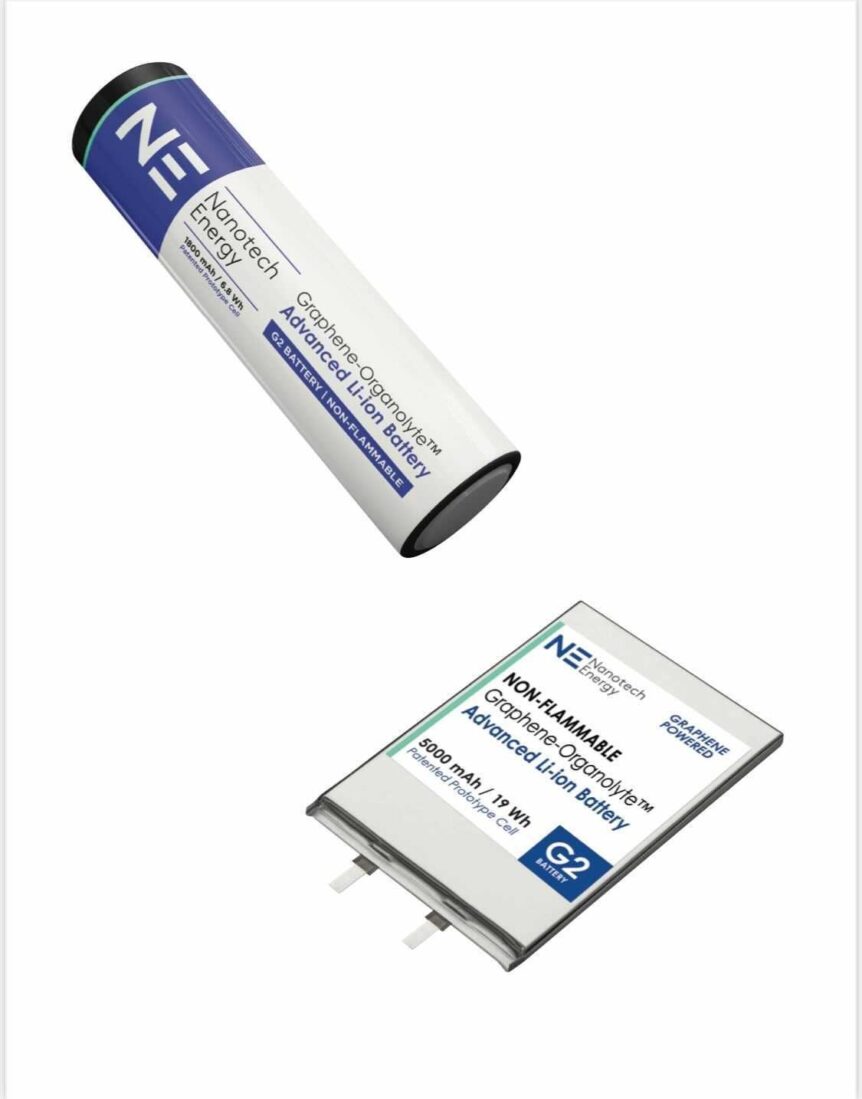Hot Pockets Introduced at this year’s CES (formerly the Consumer Electronics Show), Nanotech Energy’s Graphene-Organolyte™ Advanced Li-ion Battery (winner of a CES 2022 Innovation Award) merits a look. At least partly intended to stop battery fires, always hot news despite their relative rarity (compared to the 170,000+ petrol car fires every year), Nanotech explains its concern. “A battery, if shorted, could become a fireball bomb nearly impossible to extinguish using conventional techniques. In February 2018, the U.S. Consumer Product Safety Commission reported over 25,000 overheating and battery fire incidents involving more than 400 types of consumer products over a five-year period. Clearly, building safer batteries will be critical for the future of energy storage technology.” Keep in mind that “consumer products” include cell phones, laptop computers, and even e-cigarettes, as demonstrated here. These dangers show the need for a safe solution. Nanotech promotes its Organolyte non-flammable electrolyte as that solution, noting it will not support an open flame. Dr. Jack …
Follow the Battery Money
With Tesla’s $5.5 billion “gigafactory” already producing cells for its line of cars and its “Powerwall” home energy storage systems, it now seems like a tenuous, toe-dipping approach with Volkswagen announcing its own battery plans. VW may invest up to $15.5 billion according to Tech News, the outlet projecting the highest number. Others with less money but promising technologies are also betting on better batteries. Tesla Gigafactory Grand Opening – More to Come With only 14 percent of its total area completed, the Tesla Gigafactory on Electric Avenue (what else?) near Sparks, Nevada, is already up and running, producing Tesla’s Powerwall and Powerpack battery systems. According to Teslarati.com, “Elon Musk told investors at the 4th quarter earnings call earlier this month… those products are already profitable and are expected to become more so as volume increases.” Other projections anticipate that the Gigafactory will “be net zero and have no carbon emissions,” “net zero meaning that it will create more electricity …
Cambridge Crude Reborn in Simplified Battery
We first saw the appellation, “24M” four years ago in our report on research done at MIT to produce an ionic liquid called “Cambridge Crude,” usable in flow batteries. Dr. Yet-Ming Chiang headed up that work in collaboration with Professors Angela Belcher and Paula Hammond at MIT and Glenn Amatucci at Rutgers, among others. They formed a commercial spinoff and seemingly went underground for the next four years. Dr. Chiang and his associates had previously gone commercial with A123, which went through the trial of bankruptcy and being acquired by overseas investors. It’s now solvent and looking to double output. 24M is a spin-off of A123. We found that Professor Chiang had resurfaced when friend and blog reader Marshall Houston sent an article from Quartz about Chiang’s work with Dr. W. Craig Carter to expand on the foundational energy storage technology of 24M – based on the thick black electrolyte they’d created and a resulting semisolid electrode. Their semi-solid lithium-ion …

